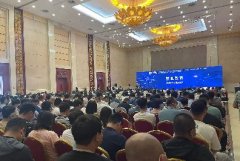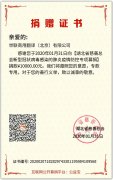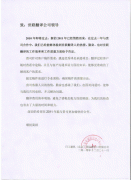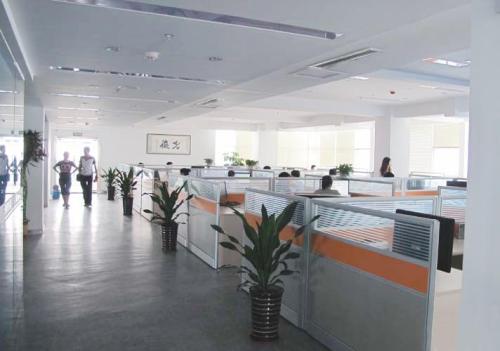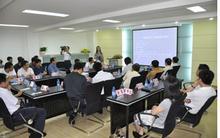上海翻译公司完成抗震说明英文翻译
时间:2018-12-17 09:12 来源:未知 作者:dl 点击:次
上海翻译公司完成抗震说明英文翻译
Outstanding Building --Anti-seismic, Anti-typhoon Timberwork Building Design Competition Instructions for designed works Membership: Dong Weibo; Li Zhi; Wu Yuxuan; Guo Zhaoxia; Zhu Wanrong; Gong Xinyuan. Advisor: Gao Ying Group’s Name: Timberwork group, Beijing Forestry University (BJFU)  Earthquake-resistant Design Instruction 1. Design basis The structure design for this project has been carried out majorly based on the following national norms, standards and manuals: Wood Structure Design Specifications GB50005-2003 Load Code for Building Structures GB50009-2012 Earthquake Resistant Design Code GB50011-2010 Unified Standard for Reliability Design of Building Structures GB50068 -2001 Classification Standard for earthquake fortification of Buildings GB50223-1995 Use Manual of Japanese Wood 2. General situation of construction The project is planned to be construct in Putian of Fujian Province, which covers a total construction area of 220m2: to be more specific, the area of the first floor is equal to that of the second one, namely 110m2. The total height of the building is 9.12m; the height of the first floor is equal to that of the second one, namely 2.73 m; and the roof truss height is 2.67m. With the girder-column wood frame taken as the main structure, this building will adopt the reinforced concrete foundation. Moreover, characterized by reasonable pace division, convenient function and smooth moving line, this design is able to the demands of the residents. 3. Engineering geological profile 3.1 Geography This project is located in the middle of Fujian coastal region: with an elevation less than 500m, the territory is mainly covered by hills; most of the underground soil is ooze; majorly covered by red and black soil, the land is fertile while the soil is loose. 3.2 Earthquake effect of the site In accordance with the current national standard Earthquake Resistant Design Code GB50011-2010, the earthquake fortification intensity for the site in Putian region shall be 7 degrees. According to the design requirements of the competition, the earthquake fortification intensity for the project is 8 degrees, the design basic earthquake acceleration is 0.2g, the design earthquake group is the third group, and the construction site of the project belongs to the Category II site. 4. Load value 4.1 Live load: floor live load According to the Load Code for Building Structures GB5009-2012, the load standard values and subentry coefficients for different categories of room are as shown in Table 4.1. Table 4.1 Floor live load table
4.2 Dead load (including the dead weight and load of the filler wall line on the girder) The overall weight of the structure is 96.67kN; according to the wall constitution and material property, the line load can be worked out: Interior wall load of the door-free opening: 1.26kN/m Exterior wall load of the door-free opening: 1.76kN/m 4.3 Wind load According to the Load Code for Building Structures GB5009-2012, the project will adopt the once-in-fifty-year fundamental wind pressure in Putian region, namely Wo=0.7kN/m2; the ground roughness belongs to the Category B; the average wind speed is 2.6m/s; the wind direction is oriented to north and northeast; the values of the wind load shape coefficient, wind vibration coefficient and wind pressure height variation coefficient shall be determined by the Load Code for Building Structures GB5009-2012. 4.4 Snow load Because Fujian Province is located in the south of China with an annual average temperature of 20.2℃, this project will not consider the snow load. 4.5 Earthquake action According to the Earthquake Resistant Design Code GB50011-2010, the analysis and design parameters are as shown in Table 4.2. Table 4.2 Parameters related to the earthquake action
Table 5.1 Material properties [excerpted from Use Manual of Japanese Wood]
Table 5.2 Facing material properties
6. Main components 6.1 Girder The girders are composed of the main girder and the secondary girder, the material for all of which is the dimension lumber of Douglas fir. The cross section size is shown as follows: The main girder: 105*270mm The secondary girder: 105*180 mm 6.2 Column The column components adopted by the project are all the dimension lumber of Cryptomeria fortunei, the cross section size of which is 105*105mm; meanwhile, the column spacing is 1000mm. 6.3 Diagonal brace The material of the diagonal brace component is the dimension lumber of Douglas fir, the cross section size of which is 105*45 mm. 6.4 Wall Indoor partition wall: the spacer column will be set every 300mm between the girder-column frame; the gap between the spacer columns will be filled with the heat preservation cotton; the two sides of the girder-column frame will be covered with the gypsum boards to constitute the wall with a total thickness of 124mm; Outdoor wall: the side of the exterior wall adjacent to the outdoor is composed of OSB, breathing paper, parting bead (with an interval of 450mm) and exterior wall stone in turn while the wall structure of the other parts is the same as that of the interior partition wall. The total thickness is 156.5mm. To be more specific, the cross section size of the spacer column is 105*45 mm, the material of which is the dimension lumber of Cryptomeria fortunei; the cross section size of the parting bead is 20*100 mm, the material of which is the Cryptomeria fortunei; the thickness of the heat preservation cotton is 105mm; the thickness of the gypsum board is 9.5mm; the thickness of the OSB is 12mm; and the thickness of the exterior wall stone is 10mm. 6.5 Floor and ceiling Floor: between the secondary girder and grille, the first floor and second floor will respectively be filled with thermal insulation material and sound insulation material, and then be laid with OSB with a thickness of 12mm and the strengthened solid wood composite floor board; Ceiling: under the secondary girder, the OSB with a thickness of 12mm and the gypsum board with a thickness of 9.5mm will be laid. 6.6 Roofing board The rafter with a dimension of 105*45 mm and the purlin with a dimension of 105*45 mm will be laid on both sides of the roof ridge; meanwhile, the basic frame will be further laid with OSB with a thickness of 12mm, five waterproof layers and solar panel. 7. Structural analysis According to the Wood Structure Design Specifications GB50005-2003, as well as the design and construction requirements stipulated by the related design manuals, the Google SketchUp software will be adopted to design the girder-column wood structure skeleton model. In addition to the foundation bearing capacity structure constituted by girder and column, the project will additionally set up the diagonal brace so as to improve the overall earthquake-resistant performance of the building. The diagonal brace will adopt the dimension lumber of Douglas fir in a dimension of 105*45mm, which is in the “X-shaped” structure: the diagonal brace will be distributed at the four corners of the house and the places inside the house carrying a large stress, which can enhance the node load capacity and the overall deformation resistant capability. The structure skeleton model is as shown in Figure 7.1. The structure analysis software of the project will adopt the building structure design software SAP2000 provided by CSI Company of the United States to construct the girder-column wood structure skeleton model. By imposing vertical load, wind load and earthquake load to the overall structure, the simulation and calculation will be carried out over the overall structure under ten different working condition combinations to analyze the stress-carrying and deformation of the building under different working condition combinations (the specific load working condition combinations shall refer to 7.1). The analysis model of SAP2000 is as shown in Figure 7.2. 7.1 Load working condition combination The analysis will be carried out in accordance with the Load Code for Building Structures GB50009-2012, the Wood Structure Design Specifications GB50005-2003, and the load working conditions probably taking place in the design and the combination will be divided into three kinds of limit state: 1. The limit state of the bearing capacity under the normal circumstance (basic combination CBJ); 2. The limit state of the normal use under the normal circumstance (characteristic combination CBB); 3. The limit state under the circumstance of earthquake (accidental combination CBO). To select the combination for calculation, the design and analysis shall be carried out for each most unfavorable combination. 7.1.1 Basic composition As for the basic composition, during the design calculation, the project has majorly adopted the three kinds of load combinations as shown in Table 7.1. Table 7.1 Table for the basic combinations
7.1.2 Characteristic combination As for the characteristic composition, during the design calculation, the project has majorly adopted the three kinds of load combinations as shown in Table 7.2. Table 7.2 Table for the characteristic combinations
As for the accidental composition, during the design calculation, the project has majorly adopted the four kinds of load combinations as shown in Table 7.3. Table 7.3 Table for the accidental combinations
7.2 Component analysis 7.2.1 Checking calculation over the maximum axial tension (Pt) and bearing capacity of the component By comparing the maximum axial force and its bearing capacity of the component under the each working condition combination, the maximum axial force worked out by the overall model SAP2000 is as shown in Table 7.6. Table 7.6 Table for the maximum axial tensile under different working condition combinations
7.2.2 Checking calculation over the maximum axial pressure (Pc) and bearing capacity of the component By comparing the maximum axial force and its bearing capacity of the component under the each working condition combination, the maximum axial force worked out by the overall model SAP2000 is as shown in Table 7.7. Table 7.7 Table for the maximum axial pressure under different working condition combinations
7.2.2 Interlayer displacement angle The maximum interlayer displacement under different working conditions is as shown in Table 7.9. Table 7.9 The maximum interlayer displacement under different working conditions There is no regulation in our nation’s Earthquake Resistant Design Code GB 50011-2001, the new version of Earthquake Resistant Design Code GB50011-2010 and the Wood Structure Design Specifications GB 50005-2003 over the interlayer displacement angle of the wood structure building. In the Earthquake Simulation Shaking Table Test over the Full-Scale House Model with Two-Storey Light Wood Structure, the scholars of Tongji University draw the test result and conclusion that “in the earthquake of 0.2g, the maximum interlayer displacement angle of the building with a symmetrical layout structure is 1/250”. From the Table 7.9, it can be known that the interlayer displacement of structure under the working condition combination with the participation of earthquake in CBO 3, namely in the direction of X, will be maximized, the value of which is 11.24mm so that, the interlayer displacement angle of the project structure will be: u/1=11.24/6000≈1/534<1/250. Therefore, the structure can meet the requirement over the interlayer displacement angle limit stipulated by the test result in the references. 8 Analysis and summary By adopting the SAP2000 software, this project has managed to carry out modeling over the girder-column wood structure, as well as to simulate and analyze the strength and stability of the structure under ten working condition combinations. The internal force analysis and deformation result under different working condition combinations have indicated that the compressive strength parallel to grain and the tensile strength parallel to grain of the components adopted for the girder-column wood structure building by the project are all less than the bearing capacity limit values stipulated by the specification and the design manual; meanwhile, the maximum interlayer displacement of the overall structure is less than the interlayer displacement limit under the earthquake of 0.2g. Therefore, with reasonable layout, appropriate rigidity and large safety reserve, the overall structure of this project can meet the requirements of the corresponding specification s and standards. 世联翻译-让世界自由沟通!专业的全球语言翻译供应商,上海翻译公司专业品牌。丝路沿线56种语言一站式翻译与技术解决方案,专业英语翻译、日语翻译等文档翻译、同传口译、视频翻译、出国外派服务,加速您的全球交付。 世联翻译公司在北京、上海、深圳等国际交往城市设有翻译基地,业务覆盖全国城市。每天有近百万字节的信息和贸易通过世联走向全球!积累了大量政商用户数据,翻译人才库数据,多语种语料库大数据。世联品牌和服务品质已得到政务防务和国际组织、跨国公司和大中型企业等近万用户的认可。 |
||||||||||||||||||||||||||||||||||||||||||||||||||||||||||||||||||||||||||||||||||||||||||||||||||||||||||||||||||||||||||||||||||||||||||||||||||||||||||||||||||||||||||||||||||||||||||||||||||||||||||||||||||||||||||||||||||||||||||||||||||||||||||||||||||||||||||







